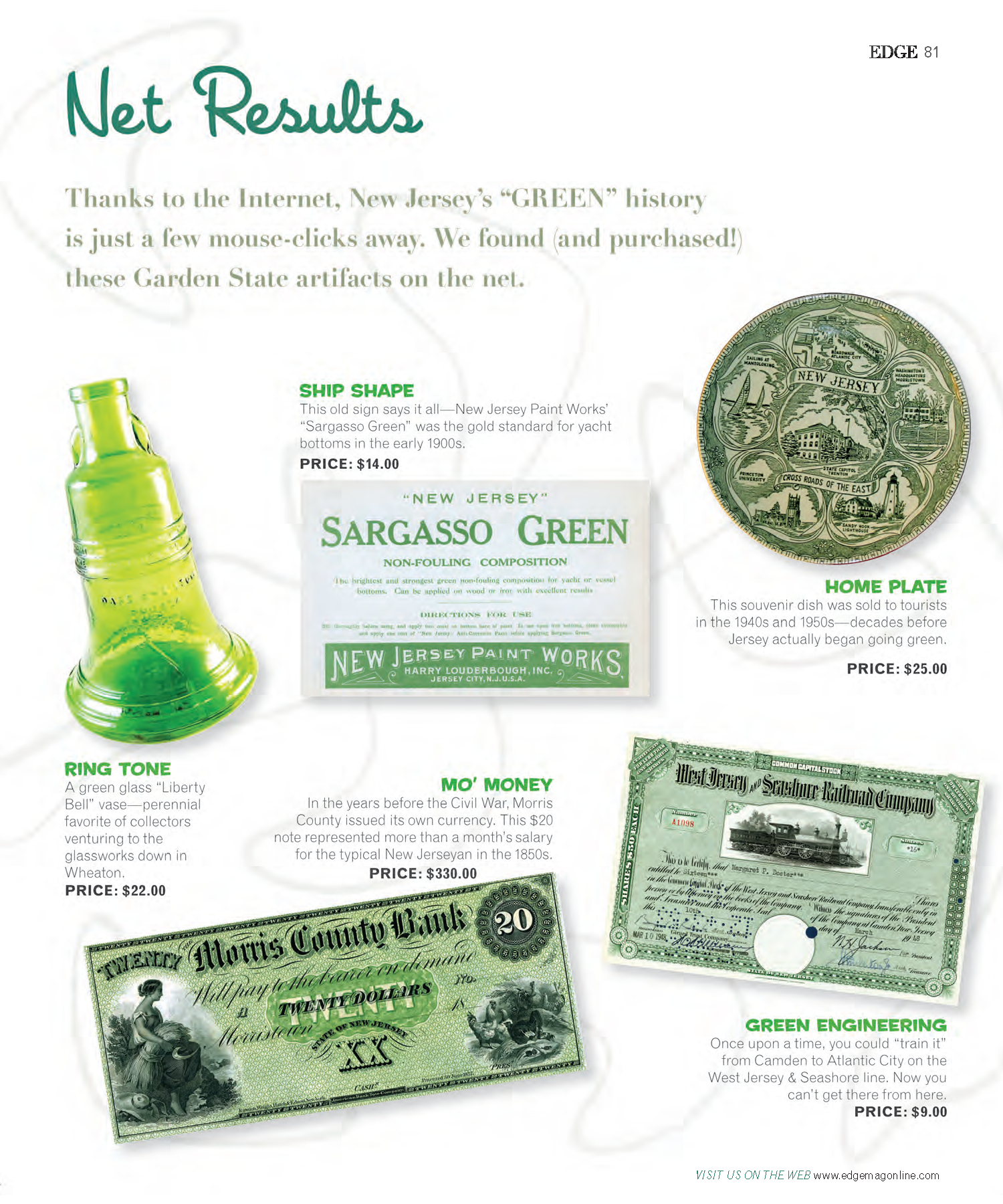“On this weekend night, folks everywhere are toasting one another. Servers sashay around the dining spaces briskly and purposefully as the evening promises to crescendo every 15 minutes.”
A private room just off the entrance to Boulevard Five72 is set for a large party. Plates, glasses and votives sit pert on a long banquet table. As we’re shown to our  “}e21`perch in the L-shaped first-floor dining room, a table for 10 catty-corner from ours is being readied for guests. Before long, on our other side, a few tables are being pushed together by the busy floor crew. I ask a server how many will be in that party. He shrugs and says, “Either 10 or 12. We’ll find out when they get here.” Party Central in Kenilworth. Boulevard Five72 is fit for celebrations and, on this weekend night, folks everywhere are toasting one another. Servers sashay around the dining spaces briskly and purposefully as the evening promises to crescendo every 15 minutes. Everyone and everything is dressed for the occasion. Approach the restaurant, which sits stately on the main thoroughfare that lends its name to Boulevard Five72, and you might think it looks something like a French chateau. Inside, there’s a bit of a French provincial feel to the décor, dominated by shades of beige and wood tones. It’s an appropriately restful backdrop to the constant-motion dining scene. Snag a bottle of wine from the list and settle in. Chef-partner Scott Snyder’s menu is amenable to almost anything you might be in the mood for. I’d suggest going for one of the value-priced red wines from Spain and letting it do-si-do with the fava bean ravioli nestled in a rustic rabbit ragout. It’s the standout dish on the menu of the moment at Boulevard Five72—a partnership of stalwarts from the south of France that have long earned their stripes at the table. Snyder finishes the starter with an ethereal pouf of truffle scented mascarpone that provides yet another flavor bridge from rabbit to fava to pasta. Or you might consider the crab cake, which here comes accompanied by a coarse chop of a salsa, starring chickpeas
“}e21`perch in the L-shaped first-floor dining room, a table for 10 catty-corner from ours is being readied for guests. Before long, on our other side, a few tables are being pushed together by the busy floor crew. I ask a server how many will be in that party. He shrugs and says, “Either 10 or 12. We’ll find out when they get here.” Party Central in Kenilworth. Boulevard Five72 is fit for celebrations and, on this weekend night, folks everywhere are toasting one another. Servers sashay around the dining spaces briskly and purposefully as the evening promises to crescendo every 15 minutes. Everyone and everything is dressed for the occasion. Approach the restaurant, which sits stately on the main thoroughfare that lends its name to Boulevard Five72, and you might think it looks something like a French chateau. Inside, there’s a bit of a French provincial feel to the décor, dominated by shades of beige and wood tones. It’s an appropriately restful backdrop to the constant-motion dining scene. Snag a bottle of wine from the list and settle in. Chef-partner Scott Snyder’s menu is amenable to almost anything you might be in the mood for. I’d suggest going for one of the value-priced red wines from Spain and letting it do-si-do with the fava bean ravioli nestled in a rustic rabbit ragout. It’s the standout dish on the menu of the moment at Boulevard Five72—a partnership of stalwarts from the south of France that have long earned their stripes at the table. Snyder finishes the starter with an ethereal pouf of truffle scented mascarpone that provides yet another flavor bridge from rabbit to fava to pasta. Or you might consider the crab cake, which here comes accompanied by a coarse chop of a salsa, starring chickpeas 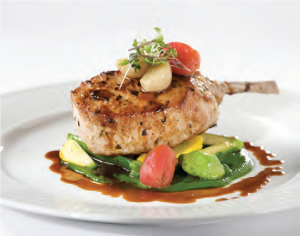 with a cameo of fruit. The punchline of the appetizer? A flash of sriracha sauce, moderated by avocado. As I ate, I thought there’d be nothing wrong with giving that hot-fun sriracha more of a chance to dance around the plate: Between the sweetness of the crab and the earthiness of the chickpeas, the dish has the foundation to stand up to more heat. Go for it. Shrimp punctuate a chunky corn chowder that benefits from a trio of compelling accents: smoky bacon, celery root and a touch of turnip. It’s a solid soup—one worth exploring all summer long—as Snyder and his kitchen crew riff on the shellfish and switch around the accenting vegetables to stay in season. One vegetable I wish they’d switch out is the red flannel hash that’s made from
with a cameo of fruit. The punchline of the appetizer? A flash of sriracha sauce, moderated by avocado. As I ate, I thought there’d be nothing wrong with giving that hot-fun sriracha more of a chance to dance around the plate: Between the sweetness of the crab and the earthiness of the chickpeas, the dish has the foundation to stand up to more heat. Go for it. Shrimp punctuate a chunky corn chowder that benefits from a trio of compelling accents: smoky bacon, celery root and a touch of turnip. It’s a solid soup—one worth exploring all summer long—as Snyder and his kitchen crew riff on the shellfish and switch around the accenting vegetables to stay in season. One vegetable I wish they’d switch out is the red flannel hash that’s made from 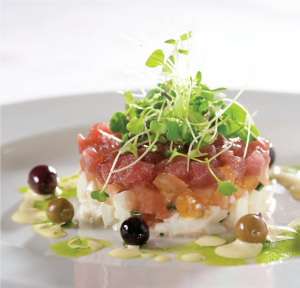 beets and plated with the grilled salmon. The grainy mustard and pesto-like spinach purée adds spot-on counterpoints to the moist fish, but the root vegetable clashes with the salmon. A basic strip loin, meanwhile, showed the kitchen’s precision, and the rich reduction of red wine swirled on the plate was all the steak needed. But a haystack of onions that looked more frizzled than frittered, as the menu described, proved an amiable companion, so we gobbled it all up. Why not? Steak and onions are a heavenly marriage. As are shellfish and arborio, the basis for Boulevard Five72’s risotto. It’s heavy on the truffle in its lobster broth, which I know draws applause from a multitude of
beets and plated with the grilled salmon. The grainy mustard and pesto-like spinach purée adds spot-on counterpoints to the moist fish, but the root vegetable clashes with the salmon. A basic strip loin, meanwhile, showed the kitchen’s precision, and the rich reduction of red wine swirled on the plate was all the steak needed. But a haystack of onions that looked more frizzled than frittered, as the menu described, proved an amiable companion, so we gobbled it all up. Why not? Steak and onions are a heavenly marriage. As are shellfish and arborio, the basis for Boulevard Five72’s risotto. It’s heavy on the truffle in its lobster broth, which I know draws applause from a multitude of  diners impressed by the presence of extreme luxury. I’m a little less drawn to the use of truffle oil than most; I think it overwhelms shellfish, in particular, keeping its unique character in the closet. We added character to our entrées in the form of two sides well worth the supplement. Spanish chips are one of the planet’s most enjoyable foods. Here the thick-cut potato slices are crisp and crunchy and judiciously dusted with pimenton and salt. Good greens are spiced just right—and right for just about any of Boulevard Five72’s entrées. My suggestion re the greens? Serve with a wedge of lemon to give diners the option of adding a little zing as desired. There’s citrus aplenty in the steamed pudding cake, an elegant finale served with a side of blackberry sorbet. An updated strawberry shortcake was underscored by a faint drop of balsamic vinegar and partnered with a creamy, subtle basil gelato. A favorite at my table was the dark chocolate-caramel tart, with its delightful sprinkling of fleur de sel and a cloud of mascarpone mousse offered as a finishing flourish. As we wound down our dinner, servers were gearing up for yet another large-party table. Amid all the activity, you might notice a slight slow-down between appetizers and main courses, and maybe your entrée plates are left to sit a tad too long after you’ve set down knife and fork. But the crew, largely, performs admirably. The crescendos continue at Boulevard Five72. EDGE
diners impressed by the presence of extreme luxury. I’m a little less drawn to the use of truffle oil than most; I think it overwhelms shellfish, in particular, keeping its unique character in the closet. We added character to our entrées in the form of two sides well worth the supplement. Spanish chips are one of the planet’s most enjoyable foods. Here the thick-cut potato slices are crisp and crunchy and judiciously dusted with pimenton and salt. Good greens are spiced just right—and right for just about any of Boulevard Five72’s entrées. My suggestion re the greens? Serve with a wedge of lemon to give diners the option of adding a little zing as desired. There’s citrus aplenty in the steamed pudding cake, an elegant finale served with a side of blackberry sorbet. An updated strawberry shortcake was underscored by a faint drop of balsamic vinegar and partnered with a creamy, subtle basil gelato. A favorite at my table was the dark chocolate-caramel tart, with its delightful sprinkling of fleur de sel and a cloud of mascarpone mousse offered as a finishing flourish. As we wound down our dinner, servers were gearing up for yet another large-party table. Amid all the activity, you might notice a slight slow-down between appetizers and main courses, and maybe your entrée plates are left to sit a tad too long after you’ve set down knife and fork. But the crew, largely, performs admirably. The crescendos continue at Boulevard Five72. EDGE

Boulevard Five72 572 Boulevard, Kenilworth 908.709.1200 Dining hours: Lunch, from 11:30 a.m. to 3 p.m. Tuesday through Friday; dinner, from 5 to 10 p.m. Monday through Thursday, 5 to 11 p.m. Friday and Saturday, 4 to 8 p.m. Sunday. Brunch is served Sundays from 11 a.m. to 3 p.m. All major credit cards accepted. Appetizers range from $14 to $16, with salad and soups in the $9-to-$12 range, entrees $22 to $38 and sides $5 to $7. Desserts are $8.




 Is it too much to ask that people not buy their first saltwater aquarium along with the fishes, live rock, and invertebrates all on their first visit to a pet shop? I experiment constantly, and found the very best aquarium I ever kept was limited to live rocks for a whole year before I put any fish in. I always tell my friends to “grow something” in the water first. No matter how many products are available to help start aquariums quickly, the aquarist’s best friend starting out is time. • Patronize the local brick & mortar pet shop and—I’ll say it again—beware of bargains. Even though it may not be able to compete with Internet prices, your local pet shop was likely opened as a labor of love and expertise; these folks are looking to make a living, not a fortune. Pet shop insiders will be the most generous of people with their time, experience, and good advice. However, be aware of the fishmonger who repeats whatever it is you just said, who agrees with a wayward premise. (Yeah! I always feed live guppies to all my cichlids.) If the advice smells like a bucket of week-old dead fish, this is what you’ll probably have next week if you buy from this guy. I only thank my lucky stars that Clownfish are now being commercially farmed at facilities like the ORA hatchery complex in Ft. Pierce, Florida and need not be collected from the wild. Had Nemo been an equally adorable Banggai Cardinalfish, collection pressures on the small wild populations would definitely have put this species at serious risk, even though it too is able to be bred in captivity; just not enough to supply the demand for fish that a movie like Nemo would generate. Although some of us in the industry wrestle with our consciences, in the end we believe that every person who begins a saltwater aquarium—regardless of the outcome— gains new respect and appreciation for our delicate planet. I can’t think of any other exercise that shows us in such acute detail just how difficult it can be to keep a small being living under our care. Perhaps if more people dedicated themselves to maintaining flourishing saltwater tanks, the Gulf of Mexico would still support a shrimping industry, global warming would be addressed in a more proactive way, and we would realize that the line between the coral reefs of Fiji and the Arthur Kill can be an astoundingly fine one. EDGE
Is it too much to ask that people not buy their first saltwater aquarium along with the fishes, live rock, and invertebrates all on their first visit to a pet shop? I experiment constantly, and found the very best aquarium I ever kept was limited to live rocks for a whole year before I put any fish in. I always tell my friends to “grow something” in the water first. No matter how many products are available to help start aquariums quickly, the aquarist’s best friend starting out is time. • Patronize the local brick & mortar pet shop and—I’ll say it again—beware of bargains. Even though it may not be able to compete with Internet prices, your local pet shop was likely opened as a labor of love and expertise; these folks are looking to make a living, not a fortune. Pet shop insiders will be the most generous of people with their time, experience, and good advice. However, be aware of the fishmonger who repeats whatever it is you just said, who agrees with a wayward premise. (Yeah! I always feed live guppies to all my cichlids.) If the advice smells like a bucket of week-old dead fish, this is what you’ll probably have next week if you buy from this guy. I only thank my lucky stars that Clownfish are now being commercially farmed at facilities like the ORA hatchery complex in Ft. Pierce, Florida and need not be collected from the wild. Had Nemo been an equally adorable Banggai Cardinalfish, collection pressures on the small wild populations would definitely have put this species at serious risk, even though it too is able to be bred in captivity; just not enough to supply the demand for fish that a movie like Nemo would generate. Although some of us in the industry wrestle with our consciences, in the end we believe that every person who begins a saltwater aquarium—regardless of the outcome— gains new respect and appreciation for our delicate planet. I can’t think of any other exercise that shows us in such acute detail just how difficult it can be to keep a small being living under our care. Perhaps if more people dedicated themselves to maintaining flourishing saltwater tanks, the Gulf of Mexico would still support a shrimping industry, global warming would be addressed in a more proactive way, and we would realize that the line between the coral reefs of Fiji and the Arthur Kill can be an astoundingly fine one. EDGE 
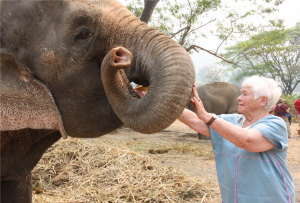 As a child I had no interest in Nancy Drew, or Jo of Little Women. Pippi Longstocking had yet to appear, but even had she arrived a few decades sooner, I’m sure I would have ignored her as well. For me, the very center of my imaginary world was Toomai the Elephant Boy. Toomai of the Elephants was just one of Rudyard Kipling’s marvelous contributions to childhood. Along with millions of other children in any of 70 languages, I was hooked by the Just So Stories in general, by Toomai in particular. Toomai who bullied his elephant. Who shouted commands and stamped his bare foot when his elephant dared not to obey him on the instant.
As a child I had no interest in Nancy Drew, or Jo of Little Women. Pippi Longstocking had yet to appear, but even had she arrived a few decades sooner, I’m sure I would have ignored her as well. For me, the very center of my imaginary world was Toomai the Elephant Boy. Toomai of the Elephants was just one of Rudyard Kipling’s marvelous contributions to childhood. Along with millions of other children in any of 70 languages, I was hooked by the Just So Stories in general, by Toomai in particular. Toomai who bullied his elephant. Who shouted commands and stamped his bare foot when his elephant dared not to obey him on the instant.  Atop his elephant, Toomai rode fearlessly through the jungles of India. Together, child and beast were impervious to all authority of his elders. Toomai and his elephant. The stuff of dreams! So it was that when I first read about Patara Farm in Thailand—and its program entitled “Own an Elephant for a Day”—I knew I had no choice. Patara Farm is located about an hour’s jeep ride outside of Chiang Mai in Northern Thailand. The owner of the farm and the inspiration for the program is a soft-spoken, 37-year-old conservationist, named Theerapat Trungprakan. (“Please, just call me Pat.”) My day of elephant ownership begins in the cool of the morning. Along with seven other would-be elephant owners (groups are limited to eight), I arrive at the 100-acre property carved out of lush woodlands and tropical verdure. Patara is home for Pat, his wife, Dow, three very young sons and 28 elephants. It’s a huge undertaking. To help him, Pat has a staff of 18 local boys, one of whom leads us from the road where our jeeps were parked, along an improvised narrow boardwalk, across a stretch of marsh to a thatched shelter, where Pat greets us. Every inch the attentive host, Pat ushers us to seats on hand-hewn benches. As we help ourselves to fruits and juices, he introduces himself and his life’s work, beginning by sketching for us the story of how elephants were domesticated 2,500 years ago in India, where they were first captured in the wild, tamed and trained. Generation after generation of these massive mammals were bred for docility, agility and robust health. The art—and what an art it is!—of training an elephant for a lifetime of productive work was handed down, father-to-son, and about 500 years ago was passed from India to Thailand. Pat tosses in a few elephant facts: An elephant has a life span of 60 to 70 years.
Atop his elephant, Toomai rode fearlessly through the jungles of India. Together, child and beast were impervious to all authority of his elders. Toomai and his elephant. The stuff of dreams! So it was that when I first read about Patara Farm in Thailand—and its program entitled “Own an Elephant for a Day”—I knew I had no choice. Patara Farm is located about an hour’s jeep ride outside of Chiang Mai in Northern Thailand. The owner of the farm and the inspiration for the program is a soft-spoken, 37-year-old conservationist, named Theerapat Trungprakan. (“Please, just call me Pat.”) My day of elephant ownership begins in the cool of the morning. Along with seven other would-be elephant owners (groups are limited to eight), I arrive at the 100-acre property carved out of lush woodlands and tropical verdure. Patara is home for Pat, his wife, Dow, three very young sons and 28 elephants. It’s a huge undertaking. To help him, Pat has a staff of 18 local boys, one of whom leads us from the road where our jeeps were parked, along an improvised narrow boardwalk, across a stretch of marsh to a thatched shelter, where Pat greets us. Every inch the attentive host, Pat ushers us to seats on hand-hewn benches. As we help ourselves to fruits and juices, he introduces himself and his life’s work, beginning by sketching for us the story of how elephants were domesticated 2,500 years ago in India, where they were first captured in the wild, tamed and trained. Generation after generation of these massive mammals were bred for docility, agility and robust health. The art—and what an art it is!—of training an elephant for a lifetime of productive work was handed down, father-to-son, and about 500 years ago was passed from India to Thailand. Pat tosses in a few elephant facts: An elephant has a life span of 60 to 70 years.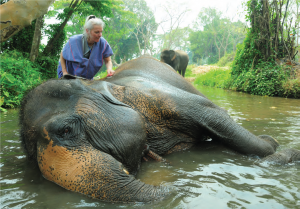 Female elephants often give birth right up through the age of 50. A newborn weighs in at about 260 pounds, delivered after 22 months of gestation. A full-grown elephant can weigh as much as 11,000 pounds and will stand as high as 10 feet at the shoulder. Elephants are herbivores, who every day pack away 350 to 400 pounds of plant material. Sugar cane and bananas rank high on their list of Favorite Foods. As we listen, we gaze out into the surrounding woodlands, where elephants stroll by at their leisure, thoughtfully munching untidy mouthfuls of shrubbery. The warm, moist air carries a strong animal musk. It smells marvelous. It bespeaks nature unbounded. Nature in the raw; somehow it conveys an elemental certainty. It’s as if, however briefly, we are transported beyond the trivia, the excess and, yes, the absurdity of human events into a realm of uncorrupted truth. To call Pat impassioned on the subject of elephants is a massive understatement. His understanding of these extraordinary animals is exceeded only by the love and respect he bears them. He tells us that there was a time when elephants roamed vast areas of Asia and Africa— before man made fire, before man stood upright, before farmers farmed. Their numbers were legion.
Female elephants often give birth right up through the age of 50. A newborn weighs in at about 260 pounds, delivered after 22 months of gestation. A full-grown elephant can weigh as much as 11,000 pounds and will stand as high as 10 feet at the shoulder. Elephants are herbivores, who every day pack away 350 to 400 pounds of plant material. Sugar cane and bananas rank high on their list of Favorite Foods. As we listen, we gaze out into the surrounding woodlands, where elephants stroll by at their leisure, thoughtfully munching untidy mouthfuls of shrubbery. The warm, moist air carries a strong animal musk. It smells marvelous. It bespeaks nature unbounded. Nature in the raw; somehow it conveys an elemental certainty. It’s as if, however briefly, we are transported beyond the trivia, the excess and, yes, the absurdity of human events into a realm of uncorrupted truth. To call Pat impassioned on the subject of elephants is a massive understatement. His understanding of these extraordinary animals is exceeded only by the love and respect he bears them. He tells us that there was a time when elephants roamed vast areas of Asia and Africa— before man made fire, before man stood upright, before farmers farmed. Their numbers were legion.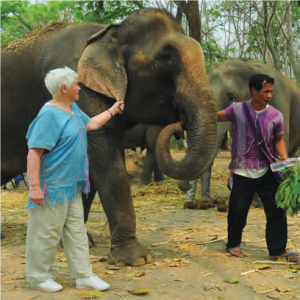 Today, it is estimated that in the whole world there are probably no more than 52,000 left in the wild. Every passing year sees their numbers decline. Where once they were used as beasts of burden, as transport, as invaluable aids in forestry, in heavy labor of every kind, today they are used only in ceremonial pageants and in a few instances as tourist attractions. “In 20 years, maybe less, elephants could become extinct. Except in a zoo, they will cease to exist.” Pat pauses, then resumes. “Extinction,” he tells us, “is forever.” He turns and we read those very words on the back of his bright red Tshirt. Each of us is paired up with an elephant. Ours for the day. I’m introduced to Nui, a 14-year old female. Tethered by one massive leg she stands in the shade of a giant mango tree. I approach with delight generously mixed with total ignorance. Meet a dog, hold out your open palm. Meet a horse, speak softly, move slowly, stroke the neck and muzzle. But meet an elephant? Toomai, help me! I reach up and run my hand over the crinkly skin.
Today, it is estimated that in the whole world there are probably no more than 52,000 left in the wild. Every passing year sees their numbers decline. Where once they were used as beasts of burden, as transport, as invaluable aids in forestry, in heavy labor of every kind, today they are used only in ceremonial pageants and in a few instances as tourist attractions. “In 20 years, maybe less, elephants could become extinct. Except in a zoo, they will cease to exist.” Pat pauses, then resumes. “Extinction,” he tells us, “is forever.” He turns and we read those very words on the back of his bright red Tshirt. Each of us is paired up with an elephant. Ours for the day. I’m introduced to Nui, a 14-year old female. Tethered by one massive leg she stands in the shade of a giant mango tree. I approach with delight generously mixed with total ignorance. Meet a dog, hold out your open palm. Meet a horse, speak softly, move slowly, stroke the neck and muzzle. But meet an elephant? Toomai, help me! I reach up and run my hand over the crinkly skin. Surprise! It’s covered with short, black, bristly hairs that are all but invisible unless you’re standing very close. She’s so big that even on tiptoe I can hardly reach higher than her eyes. By way of introduction I feed her about 20 pounds of corn cobs and sugarcane stalks provided by Tang, one of Pat’s helpers. It’s a tricky business, because each offering has to be poked directly into her mouth, which is obstructed by her trunk which curls and uncurls in unpredictable ways. “Good Nui,” I tell her, “good girl,” forgetting that though English is my language, her language is Thai. As the sun climbs toward the zenith of noon, Pat shows us how to command our elephants to lie down in order to sweep their backs free of dirt, leaves and twigs with a fistful of palm fronds. Once tidied up, I offer Nui the palm fronds, which she consumes in a single messy mouthful. Bath time! The approved technique by which one moves one’s elephant out from under a mango tree down to the river some 200 yards away consists of taking a firm grip on the edge of one ear and telling her “My-my-my-my,” the Thai word for “Come.” Slowly but surely, we progress to the river’s edge. There I release my hold, step aside and Nui wades in to join the other seven elephants. It’s playtime. With much swooshing and spraying, much splashing and squirting, all the elephants—along with their owners-for-the day—have a watery free-for-all.
Surprise! It’s covered with short, black, bristly hairs that are all but invisible unless you’re standing very close. She’s so big that even on tiptoe I can hardly reach higher than her eyes. By way of introduction I feed her about 20 pounds of corn cobs and sugarcane stalks provided by Tang, one of Pat’s helpers. It’s a tricky business, because each offering has to be poked directly into her mouth, which is obstructed by her trunk which curls and uncurls in unpredictable ways. “Good Nui,” I tell her, “good girl,” forgetting that though English is my language, her language is Thai. As the sun climbs toward the zenith of noon, Pat shows us how to command our elephants to lie down in order to sweep their backs free of dirt, leaves and twigs with a fistful of palm fronds. Once tidied up, I offer Nui the palm fronds, which she consumes in a single messy mouthful. Bath time! The approved technique by which one moves one’s elephant out from under a mango tree down to the river some 200 yards away consists of taking a firm grip on the edge of one ear and telling her “My-my-my-my,” the Thai word for “Come.” Slowly but surely, we progress to the river’s edge. There I release my hold, step aside and Nui wades in to join the other seven elephants. It’s playtime. With much swooshing and spraying, much splashing and squirting, all the elephants—along with their owners-for-the day—have a watery free-for-all.  Pat and his helpers provide us with buckets and scrub brushes; when our charges lie down, we are shown how to baste them and scrub them, an exercise which Nui and I enjoy in equal measure. At last, my Toomai moment arrives! It’s time to climb on board. Pat demonstrates four different ways of handling it. As I recall, Toomai would say the word and his elephant would wrap his trunk around him and lift him onto his head. But that method is not included in the four styles we are shown. I choose what appears to be the easiest and in so doing, I find there is no “easy” (much less “easiest”). Still, I make it onto Nui’s head by standing on her curled front leg and hauling myself up by shamelessly using her ear as a handhold. Once seated, Toomai-like, I tuck my bare feet one foot behind each ear, and speak the magic words that Nui clearly understands. It’s “Sai” for left and “Kwa” for right. We fall into parade formation and, with Pat in the lead, we make our way, slowly and stately, through a mile or so of woodlands from which we emerge in a glen into which tumbles a sparkling waterfall—the perfect antidote for Thailand’s torrid temperatures. A delectable picnic lunch of unidentifiable Thai dishes has been laid out for us atop layers of banana leaves. While we set to, our elephants gambol in the water, shooting trunksful of water at each other, not caring one whit if they soak their owners in the process. It’s late afternoon by the time we make our way back to Patara Farm. I’m soaked, exhausted, exhilarated. Nui and I have bonded. She kneels down so I can slither off her and in farewell I stroke her trunk, whispering endearments. “Lah gorn, Nui” I tell her. Remembering my Kipling, I know full well that Nui will never forget me. It goes without saying that I will never forget Nui. We bid Pat farewell. Our group heads for the jeeps and I think to myself, Well, Toomai, at long last, I made it! EDGE
Pat and his helpers provide us with buckets and scrub brushes; when our charges lie down, we are shown how to baste them and scrub them, an exercise which Nui and I enjoy in equal measure. At last, my Toomai moment arrives! It’s time to climb on board. Pat demonstrates four different ways of handling it. As I recall, Toomai would say the word and his elephant would wrap his trunk around him and lift him onto his head. But that method is not included in the four styles we are shown. I choose what appears to be the easiest and in so doing, I find there is no “easy” (much less “easiest”). Still, I make it onto Nui’s head by standing on her curled front leg and hauling myself up by shamelessly using her ear as a handhold. Once seated, Toomai-like, I tuck my bare feet one foot behind each ear, and speak the magic words that Nui clearly understands. It’s “Sai” for left and “Kwa” for right. We fall into parade formation and, with Pat in the lead, we make our way, slowly and stately, through a mile or so of woodlands from which we emerge in a glen into which tumbles a sparkling waterfall—the perfect antidote for Thailand’s torrid temperatures. A delectable picnic lunch of unidentifiable Thai dishes has been laid out for us atop layers of banana leaves. While we set to, our elephants gambol in the water, shooting trunksful of water at each other, not caring one whit if they soak their owners in the process. It’s late afternoon by the time we make our way back to Patara Farm. I’m soaked, exhausted, exhilarated. Nui and I have bonded. She kneels down so I can slither off her and in farewell I stroke her trunk, whispering endearments. “Lah gorn, Nui” I tell her. Remembering my Kipling, I know full well that Nui will never forget me. It goes without saying that I will never forget Nui. We bid Pat farewell. Our group heads for the jeeps and I think to myself, Well, Toomai, at long last, I made it! EDGE 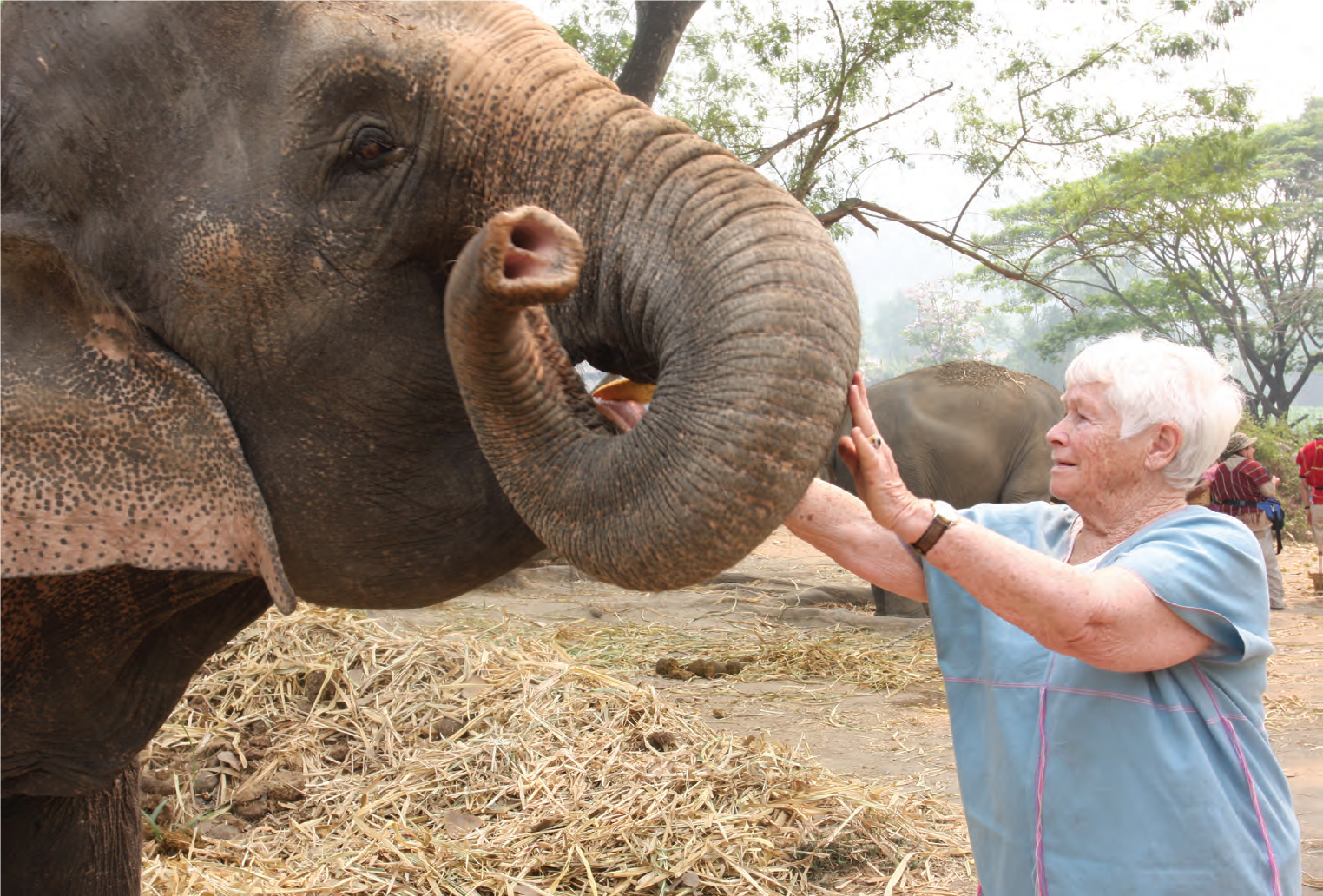
 The casualty list in this epic, microscopic battle being waged within your body includes a runny nose, scratchy throat, watery eyes, itchy hives and, in the most serious cases, a potentially lifethreatening asthma attack. “Pet dander can activate cells in the immune system,” confirms Samuel D. Kahnowitz, MD, FCCP, FACP, Chief of Pulmonary Medicine and Medical Director of Respiratory Therapy at Trinitas Regional Medical Center. “The body then makes inflammatory substances that constrict the muscles around the airway, and cause swelling on the inside of the airways, making it harder to breathe.” Reactions to pet allergies account for an increasing number of doctor and emergency room visits in this country, so the medical community is taking this trend seriously. To a layman, at least, the obvious question is, “Has pet dander somehow gotten ‘worse’ or are people becoming more sensitive to it?” Actually the same question could be asked about our food and environment—allergies in general seem to be more prevalent, and more serious, than ever. It turns out that we may be the problem. Indeed studies suggest that our country’s obsession with cleanliness may be to blame for creating hypersensitive immune systems, which now react to harmless things around us. “Our environment has improved, so we don’t have to worry about fighting off dangerous parasites,” explains Richard J. Bukosky, MD, an allergist in Linden. “The allergic antibody doesn’t have a whole lot to do. It starts to ‘pick’ on things that we’re exposed to in the environment that are completely harmless.” While there is still no permanent cure for pet allergies, there are plenty of options available for minimizing their effects on your life—and many of them don’t require finding a new home for Fluffy or Fido: Minimize exposure to pets. The less exposure to the offending pet, the better. Opting to find a new home for your pet may help in the long run, though it can take up to 20 weeks after the pet leaves before the allergen levels really dissipate.
The casualty list in this epic, microscopic battle being waged within your body includes a runny nose, scratchy throat, watery eyes, itchy hives and, in the most serious cases, a potentially lifethreatening asthma attack. “Pet dander can activate cells in the immune system,” confirms Samuel D. Kahnowitz, MD, FCCP, FACP, Chief of Pulmonary Medicine and Medical Director of Respiratory Therapy at Trinitas Regional Medical Center. “The body then makes inflammatory substances that constrict the muscles around the airway, and cause swelling on the inside of the airways, making it harder to breathe.” Reactions to pet allergies account for an increasing number of doctor and emergency room visits in this country, so the medical community is taking this trend seriously. To a layman, at least, the obvious question is, “Has pet dander somehow gotten ‘worse’ or are people becoming more sensitive to it?” Actually the same question could be asked about our food and environment—allergies in general seem to be more prevalent, and more serious, than ever. It turns out that we may be the problem. Indeed studies suggest that our country’s obsession with cleanliness may be to blame for creating hypersensitive immune systems, which now react to harmless things around us. “Our environment has improved, so we don’t have to worry about fighting off dangerous parasites,” explains Richard J. Bukosky, MD, an allergist in Linden. “The allergic antibody doesn’t have a whole lot to do. It starts to ‘pick’ on things that we’re exposed to in the environment that are completely harmless.” While there is still no permanent cure for pet allergies, there are plenty of options available for minimizing their effects on your life—and many of them don’t require finding a new home for Fluffy or Fido: Minimize exposure to pets. The less exposure to the offending pet, the better. Opting to find a new home for your pet may help in the long run, though it can take up to 20 weeks after the pet leaves before the allergen levels really dissipate.  If your dog or cat is here to stay, make sure to keep it out of your bedroom—the place where you spend most of your time—and wash your hands thoroughly after you’ve touched your pet. Weekly bathing or grooming (done by someone other than the person with the allergies) may also help keep allergens at bay. Keep it clean. Daily vacuuming and washing-down of surfaces can help clear some of the allergens—especially if you use a vacuum with a HEPA filter that can trap the tiny particles. Removing carpeting, drapery, stuffed toys and other soft fabrics can help reduce the number of places where pet dander can become trapped. “I really push for them to allergy-proof the bedroom—get rid of the carpeting and the animals, get a dehumidifier and a HEPA filter, avoid down comforters and get allergy-proofing casing for the pillows and mattresses,” Dr. Bukosky says. Consider that it might not be your pet. Even if allergy testing turns up an allergic reaction, it may not actually be your animal that’s causing the wheezing. “Dogs roam around, and it might not be the dog himself—it may be an irritant he’s picking up outside, like wood chips or rag weed,” says Dr. Kahnowitz. Take antihistamines. Newer over-the-counter formulations, like Zyrtec and Claritin, are more potent and less likely to cause drowsiness and other unpleasant side effects. Try a more serious approach. Doctors have become more aggressive in treating allergies, often including steroids in the treatment plan. “We’re pushing steroids more,” Dr. Bukosky says. “We used to use a montelukast (Singulair) a lot, but we’ve started to use inhaled steroids more—for nasal allergies, internasal steroids are a good option.” Of course, pet allergies can also be treated with a program of allergy immunizations. “We push for immunizations, which make it less likely that you’ll develop asthma,” says Dr. Bukosky. The regimens generally start with weekly shots, then as the treatment progresses, patients can go longer and longer between injections. Finally, there’s the do-nothing approach. These are the people who claim they have built an immunity to their animal. Is this really possible? The answer is yes…and no. Dr. Bukosky warns that what these pet owners believe to be happening may not actually be the case. “With daily exposure to the pet, a person with allergies may be having mild allergy-like attacks each day that use up the IgE antibody—just not enough to cause symptoms,” he says. “Then the child goes off to college, or is away from the pet for a long vacation, and has an asthma attack. So you may become ‘used to’ your pet, but you have to be in constant contact with it to avoid a serious reaction.”
If your dog or cat is here to stay, make sure to keep it out of your bedroom—the place where you spend most of your time—and wash your hands thoroughly after you’ve touched your pet. Weekly bathing or grooming (done by someone other than the person with the allergies) may also help keep allergens at bay. Keep it clean. Daily vacuuming and washing-down of surfaces can help clear some of the allergens—especially if you use a vacuum with a HEPA filter that can trap the tiny particles. Removing carpeting, drapery, stuffed toys and other soft fabrics can help reduce the number of places where pet dander can become trapped. “I really push for them to allergy-proof the bedroom—get rid of the carpeting and the animals, get a dehumidifier and a HEPA filter, avoid down comforters and get allergy-proofing casing for the pillows and mattresses,” Dr. Bukosky says. Consider that it might not be your pet. Even if allergy testing turns up an allergic reaction, it may not actually be your animal that’s causing the wheezing. “Dogs roam around, and it might not be the dog himself—it may be an irritant he’s picking up outside, like wood chips or rag weed,” says Dr. Kahnowitz. Take antihistamines. Newer over-the-counter formulations, like Zyrtec and Claritin, are more potent and less likely to cause drowsiness and other unpleasant side effects. Try a more serious approach. Doctors have become more aggressive in treating allergies, often including steroids in the treatment plan. “We’re pushing steroids more,” Dr. Bukosky says. “We used to use a montelukast (Singulair) a lot, but we’ve started to use inhaled steroids more—for nasal allergies, internasal steroids are a good option.” Of course, pet allergies can also be treated with a program of allergy immunizations. “We push for immunizations, which make it less likely that you’ll develop asthma,” says Dr. Bukosky. The regimens generally start with weekly shots, then as the treatment progresses, patients can go longer and longer between injections. Finally, there’s the do-nothing approach. These are the people who claim they have built an immunity to their animal. Is this really possible? The answer is yes…and no. Dr. Bukosky warns that what these pet owners believe to be happening may not actually be the case. “With daily exposure to the pet, a person with allergies may be having mild allergy-like attacks each day that use up the IgE antibody—just not enough to cause symptoms,” he says. “Then the child goes off to college, or is away from the pet for a long vacation, and has an asthma attack. So you may become ‘used to’ your pet, but you have to be in constant contact with it to avoid a serious reaction.”
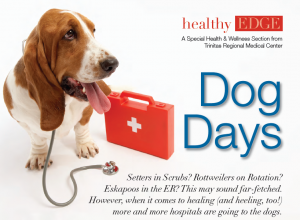 Heart attack victims who have pets tend to live longer. Watching fish in a tank can lower blood pressure. In senior adults, canine companionship can keep mental health complications from turning into physical deterioration. Indeed, considerable evidence supports the healing potential of pet therapy. There is plenty of history to back up the power of pet therapy, too. The first documented account of animal therapy dates back to the 9th century in Gheel, Belgium, where farm animals were used to help disabled people cope. In Washington, D.C. in 1919, psychiatric patients at St. Elizabeth’s Hospital had dogs available for their recognized therapeutic value. And in the decades since, the medical community has come to embrace this interactive approach to improving the quality of life, both for patients in recovery and for those whose health may be in decline. For the record, today the more politically correct term for pet-related therapy is either Animal-Assisted Activities (AAA) or Animal-Assisted Therapy (AAT). AAA is a more casual meet-and-greet approach to hands-on contact between patients and pets, while AAT is a more formal clinical approach with patients who may be challenged physically, emotionally, or mentally.
Heart attack victims who have pets tend to live longer. Watching fish in a tank can lower blood pressure. In senior adults, canine companionship can keep mental health complications from turning into physical deterioration. Indeed, considerable evidence supports the healing potential of pet therapy. There is plenty of history to back up the power of pet therapy, too. The first documented account of animal therapy dates back to the 9th century in Gheel, Belgium, where farm animals were used to help disabled people cope. In Washington, D.C. in 1919, psychiatric patients at St. Elizabeth’s Hospital had dogs available for their recognized therapeutic value. And in the decades since, the medical community has come to embrace this interactive approach to improving the quality of life, both for patients in recovery and for those whose health may be in decline. For the record, today the more politically correct term for pet-related therapy is either Animal-Assisted Activities (AAA) or Animal-Assisted Therapy (AAT). AAA is a more casual meet-and-greet approach to hands-on contact between patients and pets, while AAT is a more formal clinical approach with patients who may be challenged physically, emotionally, or mentally. her five-year old beagle, Murphy. Both have been certified by St. Hubert’s. Reynolds recognized early on that Murphy had the necessary qualifications, since he had become an ambassador of goodwill in her own neighborhood, particularly among senior residents. Currently, the psych department’s group sessions are held at Trinitas, with special visits paid to the on-site nursing facility—the domain of Harley, another gifted pet “therapist.” The adult outpatient groups are often organized according to particular challenge. Two of the currently active groups are focusing on anxiety relief and partial vs. unconditional love. Reynolds refers to these sessions as her “puppy love” groups. “I really just knew I had to share him,” Reynolds says of Murphy, who wears a hospital staff photo ID badge, as do all the therapy dogs. It is attached to his favorite bandana; Reynolds realized that Murphy needed a work wardrobe and provided it. Murphy is typically on the job two or three days a month. A typical day includes sessions with two to three groups, each with five to ten patients. Patients are not the only recipients of Murphy’s healing powers. Staff members having a bad day often drop by for a visit and a pet. Murphy is happy to oblige. “No stranger is too strange for Murphy,” Reynolds says.
her five-year old beagle, Murphy. Both have been certified by St. Hubert’s. Reynolds recognized early on that Murphy had the necessary qualifications, since he had become an ambassador of goodwill in her own neighborhood, particularly among senior residents. Currently, the psych department’s group sessions are held at Trinitas, with special visits paid to the on-site nursing facility—the domain of Harley, another gifted pet “therapist.” The adult outpatient groups are often organized according to particular challenge. Two of the currently active groups are focusing on anxiety relief and partial vs. unconditional love. Reynolds refers to these sessions as her “puppy love” groups. “I really just knew I had to share him,” Reynolds says of Murphy, who wears a hospital staff photo ID badge, as do all the therapy dogs. It is attached to his favorite bandana; Reynolds realized that Murphy needed a work wardrobe and provided it. Murphy is typically on the job two or three days a month. A typical day includes sessions with two to three groups, each with five to ten patients. Patients are not the only recipients of Murphy’s healing powers. Staff members having a bad day often drop by for a visit and a pet. Murphy is happy to oblige. “No stranger is too strange for Murphy,” Reynolds says.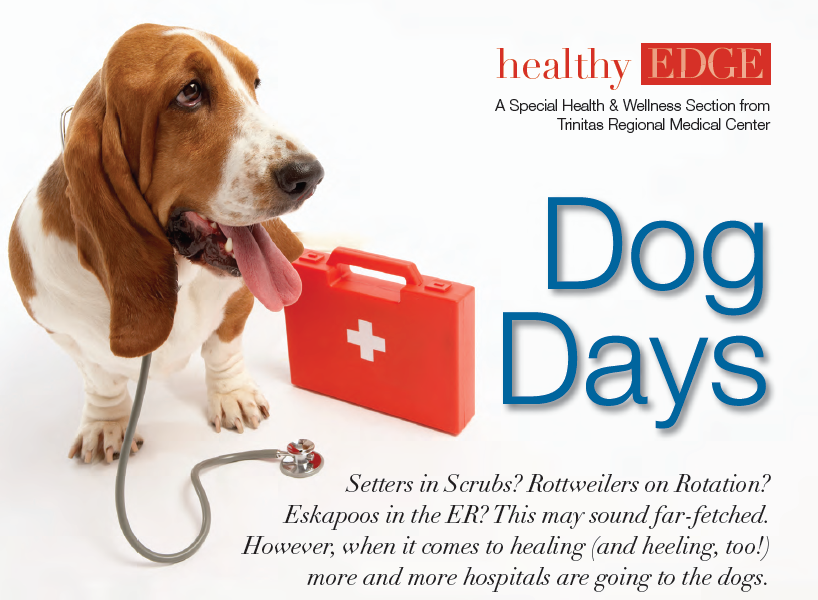
 Editor Zack Burgess managed to grab 20 solid minutes with Beth at the “tail end” of the publicity tour for her new book, Oh My Dog: How to choose, train, groom, nurture, feed and care for your new best friend (Gallery Books). Zack covered a lot of ground in his Q&A, yet he never got to the question Letterman posed to her on national television: Why Howard? Turns out she kind of answered it anyway. The spokesperson for North Shore Animal League America, Beth wouldn’t tell us how her book ends. Spoiler alert…the woman ends up taking care of the dog!
Editor Zack Burgess managed to grab 20 solid minutes with Beth at the “tail end” of the publicity tour for her new book, Oh My Dog: How to choose, train, groom, nurture, feed and care for your new best friend (Gallery Books). Zack covered a lot of ground in his Q&A, yet he never got to the question Letterman posed to her on national television: Why Howard? Turns out she kind of answered it anyway. The spokesperson for North Shore Animal League America, Beth wouldn’t tell us how her book ends. Spoiler alert…the woman ends up taking care of the dog!
 BOS: I believe in love at first sight. Just know what you’re looking for. Assess your lifestyle, as I mentioned before. When you go into a shelter, if you have a big house with a beautiful yard or access to a park, you might want to get a bigger breed. Or if you live in a one-bedroom apartment, you might not want to get that Rottweiler or Bernese Mountain dog; you might want to go for a smaller dog. Talk to the adoption counselor, determine the right fit for your lifestyle, and then when you spend time with a dog and make eye contact and fall in love, you’re also going to know it’s the right one to bring home.
BOS: I believe in love at first sight. Just know what you’re looking for. Assess your lifestyle, as I mentioned before. When you go into a shelter, if you have a big house with a beautiful yard or access to a park, you might want to get a bigger breed. Or if you live in a one-bedroom apartment, you might not want to get that Rottweiler or Bernese Mountain dog; you might want to go for a smaller dog. Talk to the adoption counselor, determine the right fit for your lifestyle, and then when you spend time with a dog and make eye contact and fall in love, you’re also going to know it’s the right one to bring home.

 Compounding this dilemma is the fact that dogs rarely display the pain they are experiencing at home on a trip to the animal hospital. Their adrenaline is pumping, their senses are under assault, and many experience off-the-charts anxiety—all of which can mask their pain once they hit the examining table. So what’s a vet to do? Keep score. They now can do so thanks to an elegantly simple document called the Canine Brief Pain Inventory (aka CBPI), which was developed at the University Pennsylvania School of Veterinary Medicine. The two-page evaluation sheet contains 11 carefully constructed questions, each of which can be answered on a sliding scale from 1 to 10—not by the doctor or (obviously) the patient, but by the dog owner. The result is a score which, over years of trials, has proven to be remarkably accurate. Why the dog owner? The answer would seem to be a no-brainer. After all, who better to report on a pet’s condition than the person who sees that pet more than anyone? But there’s the rub. The idea of taking what is purely observational data and then translating that into unimpeachable science is not always an easy sell. It’s not weaving straw into gold, mind you, but to some it has a little of that flavor. Not so says the CBPI’s creator, Dr. Dorothy Cimino Brown, Professor and Chief of Surgery at Penn who also has a practice within the university. “There is a whole scientific method surrounding how you build a numbers-based assessment tool from something that is inherently subjective,” she says. “It is a multi-step process during which you develop interview questions and then determine what and how they should be asked, and also how the answers should be recorded. We knew that the signs and behaviors associated with chronic pain in dogs can be non-dramatic, and therefore would be best known by dog owners. That is why we devoted five years and $500,000 on studies and focus groups in order to develop a scientifically reliable instrument.” According to Dr. Brown, there was a lot of tweaking during CBPI’s first two years, and mostly fine-tuning over the last three. Some of the questions to be included seemed obvious to everyone, such as How is your dog hopping into the car or getting upstairs? One development that surprised the researchers was a sleep question. Dogs experiencing pain related to cancer have trouble sleeping, so everyone assumed a sleep question would make the final cut. “It didn’t,” says Dr. Brown. “In building a question about sleep we could never get it to
Compounding this dilemma is the fact that dogs rarely display the pain they are experiencing at home on a trip to the animal hospital. Their adrenaline is pumping, their senses are under assault, and many experience off-the-charts anxiety—all of which can mask their pain once they hit the examining table. So what’s a vet to do? Keep score. They now can do so thanks to an elegantly simple document called the Canine Brief Pain Inventory (aka CBPI), which was developed at the University Pennsylvania School of Veterinary Medicine. The two-page evaluation sheet contains 11 carefully constructed questions, each of which can be answered on a sliding scale from 1 to 10—not by the doctor or (obviously) the patient, but by the dog owner. The result is a score which, over years of trials, has proven to be remarkably accurate. Why the dog owner? The answer would seem to be a no-brainer. After all, who better to report on a pet’s condition than the person who sees that pet more than anyone? But there’s the rub. The idea of taking what is purely observational data and then translating that into unimpeachable science is not always an easy sell. It’s not weaving straw into gold, mind you, but to some it has a little of that flavor. Not so says the CBPI’s creator, Dr. Dorothy Cimino Brown, Professor and Chief of Surgery at Penn who also has a practice within the university. “There is a whole scientific method surrounding how you build a numbers-based assessment tool from something that is inherently subjective,” she says. “It is a multi-step process during which you develop interview questions and then determine what and how they should be asked, and also how the answers should be recorded. We knew that the signs and behaviors associated with chronic pain in dogs can be non-dramatic, and therefore would be best known by dog owners. That is why we devoted five years and $500,000 on studies and focus groups in order to develop a scientifically reliable instrument.” According to Dr. Brown, there was a lot of tweaking during CBPI’s first two years, and mostly fine-tuning over the last three. Some of the questions to be included seemed obvious to everyone, such as How is your dog hopping into the car or getting upstairs? One development that surprised the researchers was a sleep question. Dogs experiencing pain related to cancer have trouble sleeping, so everyone assumed a sleep question would make the final cut. “It didn’t,” says Dr. Brown. “In building a question about sleep we could never get it to  mathematically behave. So we eliminated it. The problem was that not all owners sleep in the same room as their dog, so we dropped it from the inventory.” Brown’s team is pleased with the acceptance of the CBPI within the veterinary community. The form is available on the Internet at no charge, and it already has been downloaded more than 500 times; there is no way to track how often it is emailed or disseminated in other ways. After some initial resistance, the CBPI received glowing reviews in veterinary publications and today companies seeking FDA approval for canine pain medicine are using the CBPI to determine whether a drug is doing what it is supposed to do. Will the CBPI achieve “industry standard” status? From a research standpoint, it’s already a superb one. Considering that many local practitioners don’t use anything—they will ask how a dog is doing, but they don’t quantify it longitudinally—often a change in medication or treatment is based solely on feel. Old dogs can learn new tricks, as can vets who might initially resist an instrument such as the CBPI. From a patient record-keeping standpoint alone, says Dr. Brown, it just makes sense. “We recognize that the idea you can build an objective tool for a subjective situation is something new for veterinarians,” she offers. “But you can’t just pull six questions out of the air and expect to get a real evaluation.” EDGE
mathematically behave. So we eliminated it. The problem was that not all owners sleep in the same room as their dog, so we dropped it from the inventory.” Brown’s team is pleased with the acceptance of the CBPI within the veterinary community. The form is available on the Internet at no charge, and it already has been downloaded more than 500 times; there is no way to track how often it is emailed or disseminated in other ways. After some initial resistance, the CBPI received glowing reviews in veterinary publications and today companies seeking FDA approval for canine pain medicine are using the CBPI to determine whether a drug is doing what it is supposed to do. Will the CBPI achieve “industry standard” status? From a research standpoint, it’s already a superb one. Considering that many local practitioners don’t use anything—they will ask how a dog is doing, but they don’t quantify it longitudinally—often a change in medication or treatment is based solely on feel. Old dogs can learn new tricks, as can vets who might initially resist an instrument such as the CBPI. From a patient record-keeping standpoint alone, says Dr. Brown, it just makes sense. “We recognize that the idea you can build an objective tool for a subjective situation is something new for veterinarians,” she offers. “But you can’t just pull six questions out of the air and expect to get a real evaluation.” EDGE 
 And I’m not one to give up easily. I run a business that presents a new twist or challenge on an hourly basis; if I don’t hear someone screaming a four-letter word, I actually worry that something’s wrong. Perhaps that is why my favorite four-letter word is Polo. Yes, I know. We tend to think of polo as an exclusive pastime for those who enjoy the privileges of wealth and influence. And in some parts of the world this is true. But I have experienced firsthand the inclusive side of polo, too— the side that brings people from all walks of life together in a beautiful setting, transforming that sleepy Sunday into a vibrant sporting and social event. Some come to watch the action. Others come to connect with old friends and meet new ones. Big kids come and so do little ones. And a lot of people may not admit it, but they come for the amazing food. The point is that everyone comes. For those interested in business or social networking opportunities, well, obviously that goes on all the time at a polo match. In fact, much like golf, the two are constantly intertwined. Unlike golf, it doesn’t take a mother or father away from home all day. Indeed, I know of no other leisure activity that promotes the family dynamic the way that polo does. And this applies to virtually any family. Families with young children will find plenty to do at a polo match.
And I’m not one to give up easily. I run a business that presents a new twist or challenge on an hourly basis; if I don’t hear someone screaming a four-letter word, I actually worry that something’s wrong. Perhaps that is why my favorite four-letter word is Polo. Yes, I know. We tend to think of polo as an exclusive pastime for those who enjoy the privileges of wealth and influence. And in some parts of the world this is true. But I have experienced firsthand the inclusive side of polo, too— the side that brings people from all walks of life together in a beautiful setting, transforming that sleepy Sunday into a vibrant sporting and social event. Some come to watch the action. Others come to connect with old friends and meet new ones. Big kids come and so do little ones. And a lot of people may not admit it, but they come for the amazing food. The point is that everyone comes. For those interested in business or social networking opportunities, well, obviously that goes on all the time at a polo match. In fact, much like golf, the two are constantly intertwined. Unlike golf, it doesn’t take a mother or father away from home all day. Indeed, I know of no other leisure activity that promotes the family dynamic the way that polo does. And this applies to virtually any family. Families with young children will find plenty to do at a polo match. There are the magnificent ponies to admire, the spotless stables to explore, a variety of kid-friendly activities and, naturally, lots of other young boys and girls. Families with teenagers typically park the car, get a feel for the layout and logistics, and then watch with confidence (and relief) as their sons and daughters fan out on their own—leaving mom and dad to enjoy a civilized afternoon and recharge their batteries for the week ahead.
There are the magnificent ponies to admire, the spotless stables to explore, a variety of kid-friendly activities and, naturally, lots of other young boys and girls. Families with teenagers typically park the car, get a feel for the layout and logistics, and then watch with confidence (and relief) as their sons and daughters fan out on their own—leaving mom and dad to enjoy a civilized afternoon and recharge their batteries for the week ahead. The animal that riders must control is a “pony” in name only—they are full-on horses, four to eight inches taller than the riding ponies at your local stable, and a lot stronger and swifter. They tip the scales at around 1,000 pounds. When they thunder past the spectators, the air crackles with energy. A good polo pony can cost a cool quarter-million dollars or more, and requires up to two years of training before they are ready for competition. They continue to train daily, often twice a day. A polo pony must respond to a rider’s instructions through a variety of one-handed tugs on the reins and subtle weight shifts and leg movements. They are primped and pampered in between matches, but once the action starts they are pushed to their absolute limits. Many first-time polo fans are amazed to see how often a player changes mounts. His string of ponies usually ranges between three and seven. If you’ve ever watched an ice hockey team change lines, then you have some idea of the level of exertion involved. A quality horse can get its rider to the ball. From
The animal that riders must control is a “pony” in name only—they are full-on horses, four to eight inches taller than the riding ponies at your local stable, and a lot stronger and swifter. They tip the scales at around 1,000 pounds. When they thunder past the spectators, the air crackles with energy. A good polo pony can cost a cool quarter-million dollars or more, and requires up to two years of training before they are ready for competition. They continue to train daily, often twice a day. A polo pony must respond to a rider’s instructions through a variety of one-handed tugs on the reins and subtle weight shifts and leg movements. They are primped and pampered in between matches, but once the action starts they are pushed to their absolute limits. Many first-time polo fans are amazed to see how often a player changes mounts. His string of ponies usually ranges between three and seven. If you’ve ever watched an ice hockey team change lines, then you have some idea of the level of exertion involved. A quality horse can get its rider to the ball. From  there, however, it’s up to the player to pass, defend or score. There are four players per side, each with different responsibilities. The point of polo is to work the ball up the field and knock it through a goal that is eight yards wide. The field itself is 300 yards long with tall sideboards to protect the spectators and keep the ball in play. Defense is all about position and timing. A player can thwart an opponent by interfering with his mallet, or by “riding him off” (picture a half-ton bodycheck). For us, polo is a family sport no matter where we are sitting. My great joy is that I now train and compete with my sons, Tyler, Shaun and Jeffrey. I have been working on my polo game for more than a decade and still feel like I’m learning something new every day. Often I am asked about the skill level required to play polo at a world-class level. The truth is that it’s difficult to define. Try hitting a golf ball one-handed on a bicycle at 30 mph without ending up in a heap and you’ll have some idea of the talent and training involved. Better yet, come out to a match this summer. You’ll see…it really is a family thing. EDGE
there, however, it’s up to the player to pass, defend or score. There are four players per side, each with different responsibilities. The point of polo is to work the ball up the field and knock it through a goal that is eight yards wide. The field itself is 300 yards long with tall sideboards to protect the spectators and keep the ball in play. Defense is all about position and timing. A player can thwart an opponent by interfering with his mallet, or by “riding him off” (picture a half-ton bodycheck). For us, polo is a family sport no matter where we are sitting. My great joy is that I now train and compete with my sons, Tyler, Shaun and Jeffrey. I have been working on my polo game for more than a decade and still feel like I’m learning something new every day. Often I am asked about the skill level required to play polo at a world-class level. The truth is that it’s difficult to define. Try hitting a golf ball one-handed on a bicycle at 30 mph without ending up in a heap and you’ll have some idea of the talent and training involved. Better yet, come out to a match this summer. You’ll see…it really is a family thing. EDGE 











 REN’S GLYCOLACTIC SKIN RENEWAL PEEL MASK ($55 / 1.7 oz.) is a potent bioactive complex that reduces fine lines and improves tone and firmness. This treatment safely and effectively resurfaces the skin without causing irritation. Its four-fruit-acidcomplex (lactic, glycolic, tartaric and citric) and papain enzyme create a gentle-yet-potent exfoliating action, which leaves skin glowing once again. In addition to its obvious aesthetic benefits, Ren’s Peel Mask doesn’t include synthetic fragrances, silicones, synthetic dyes, or petrochemicals, which add a caustic element to an already somewhat harsh treatment. This mask is particularly recommended for congested and mature skin. It works well on post-acne scarring and sundamaged skin. Of course, since it’s a peel, sensitive skin types should be slightly cautious. Now that we’ve got ourselves a fresh canvas, nothing’s more vital to healthy looking skin than hydration. But, don’t be fooled—just because a night cream boasts an olive in the title, doesn’t mean it’s all natural! Several big-name labs throw in shoddy synthetic fragrances but leave out the nourishing organ ics.
REN’S GLYCOLACTIC SKIN RENEWAL PEEL MASK ($55 / 1.7 oz.) is a potent bioactive complex that reduces fine lines and improves tone and firmness. This treatment safely and effectively resurfaces the skin without causing irritation. Its four-fruit-acidcomplex (lactic, glycolic, tartaric and citric) and papain enzyme create a gentle-yet-potent exfoliating action, which leaves skin glowing once again. In addition to its obvious aesthetic benefits, Ren’s Peel Mask doesn’t include synthetic fragrances, silicones, synthetic dyes, or petrochemicals, which add a caustic element to an already somewhat harsh treatment. This mask is particularly recommended for congested and mature skin. It works well on post-acne scarring and sundamaged skin. Of course, since it’s a peel, sensitive skin types should be slightly cautious. Now that we’ve got ourselves a fresh canvas, nothing’s more vital to healthy looking skin than hydration. But, don’t be fooled—just because a night cream boasts an olive in the title, doesn’t mean it’s all natural! Several big-name labs throw in shoddy synthetic fragrances but leave out the nourishing organ ics. Transformation-Renewing Creme, and Invigorating Night Gel-Firming Treatment. The payoff is truly amazing. Each formulation is oil-free, light in texture, firming, pore-tightening, and promotes uniform pigmentation. Remarkably, this trio is also free of carcinogenic parabens, sulfates, and triclosan. My next recommendation has long been a staple among beauty industry professionals; its natural botanical composition has always taken a backseat to its unbelievable simplistic fine quality.
Transformation-Renewing Creme, and Invigorating Night Gel-Firming Treatment. The payoff is truly amazing. Each formulation is oil-free, light in texture, firming, pore-tightening, and promotes uniform pigmentation. Remarkably, this trio is also free of carcinogenic parabens, sulfates, and triclosan. My next recommendation has long been a staple among beauty industry professionals; its natural botanical composition has always taken a backseat to its unbelievable simplistic fine quality.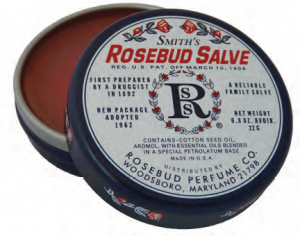 Every girl needs a sweet vernal lip pigment to complement the renewal of dewy skin, which is why ROSEBUD PERFUME’s lip balms and salves are an absolute essential for anyone who plans to be kissed this summer. Touched ever so slightly with the faintest of pink hues (listed here from lightest to darkest), Smith’s Strawberry Lip Balm, Rosebud Salve, and Minted Rose Lip Balms are masterful (and at a price of $6/.8 oz., they’re worth exploring, guilt-free). Each of Rosebud’s products tastes and smells delicious, is free of any and all synthetic additives, and maintains the company’s long-standing policy of no animal testing.
Every girl needs a sweet vernal lip pigment to complement the renewal of dewy skin, which is why ROSEBUD PERFUME’s lip balms and salves are an absolute essential for anyone who plans to be kissed this summer. Touched ever so slightly with the faintest of pink hues (listed here from lightest to darkest), Smith’s Strawberry Lip Balm, Rosebud Salve, and Minted Rose Lip Balms are masterful (and at a price of $6/.8 oz., they’re worth exploring, guilt-free). Each of Rosebud’s products tastes and smells delicious, is free of any and all synthetic additives, and maintains the company’s long-standing policy of no animal testing.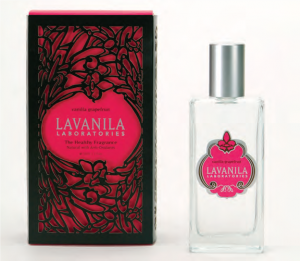









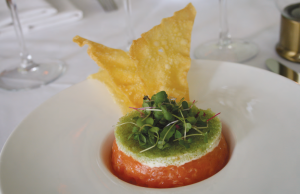
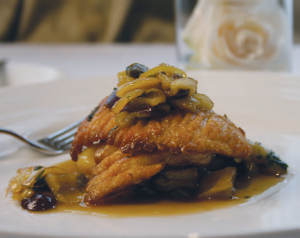
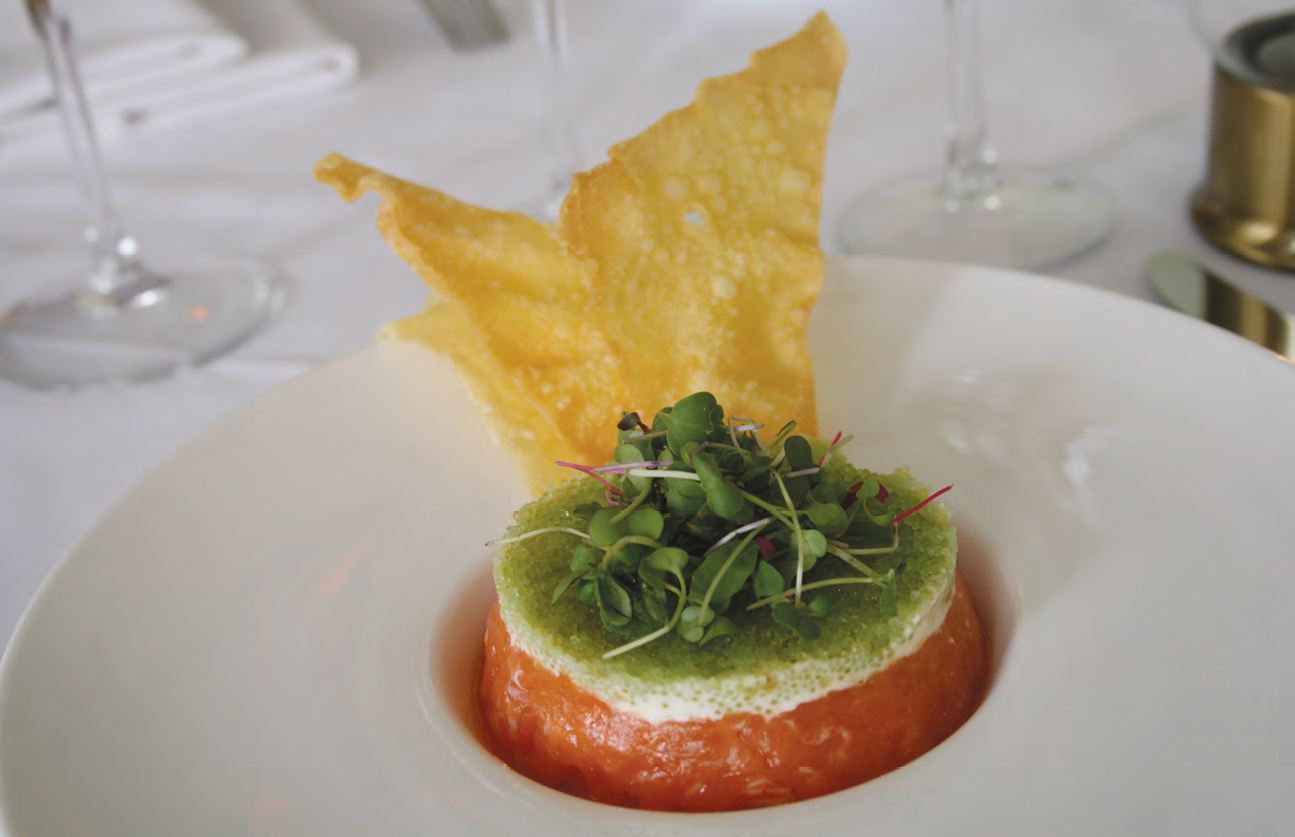



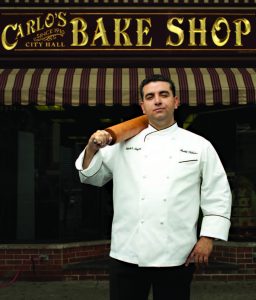
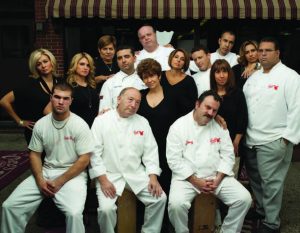





 ding a few hours at a nice restaurant. By definition, this serves the purpose—they’re doing something and they’re together. So why, after they pay the bill and argue about whether the tip was adequate (and was that last Sambuca really necessary?), does the sense of isolation remain? Because
ding a few hours at a nice restaurant. By definition, this serves the purpose—they’re doing something and they’re together. So why, after they pay the bill and argue about whether the tip was adequate (and was that last Sambuca really necessary?), does the sense of isolation remain? Because




